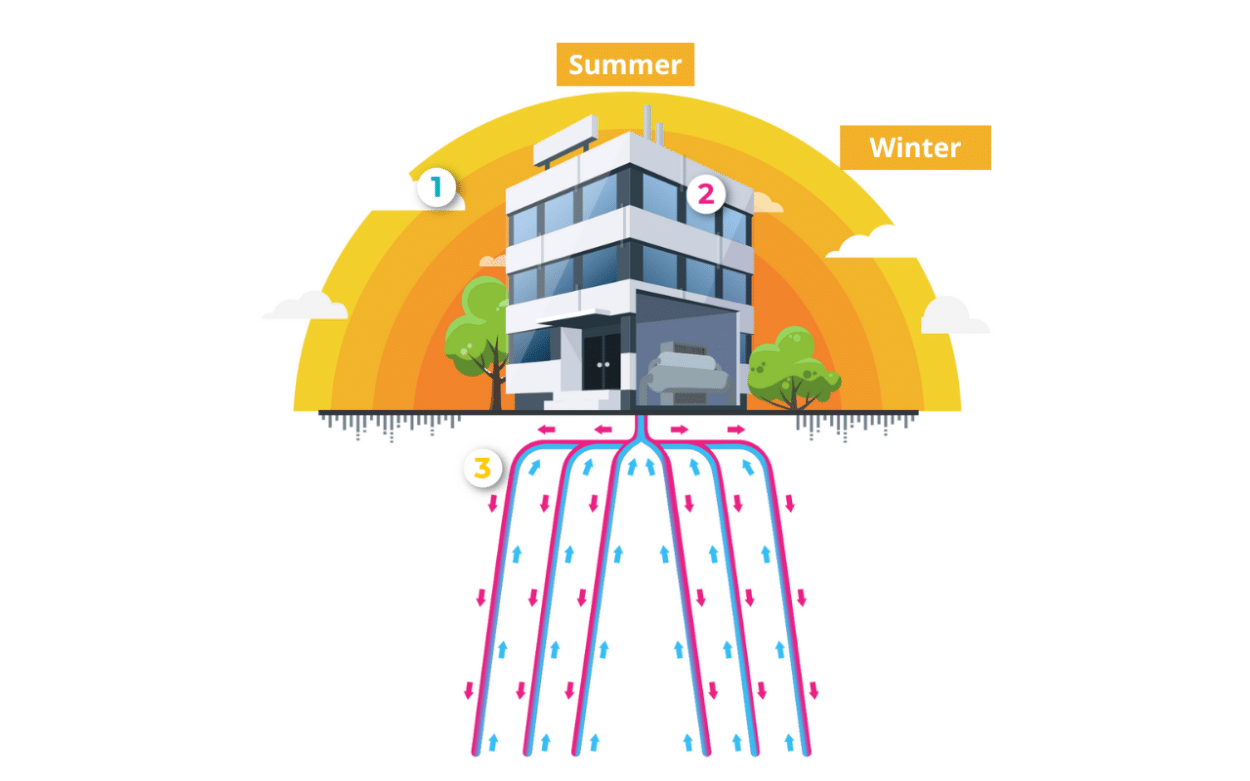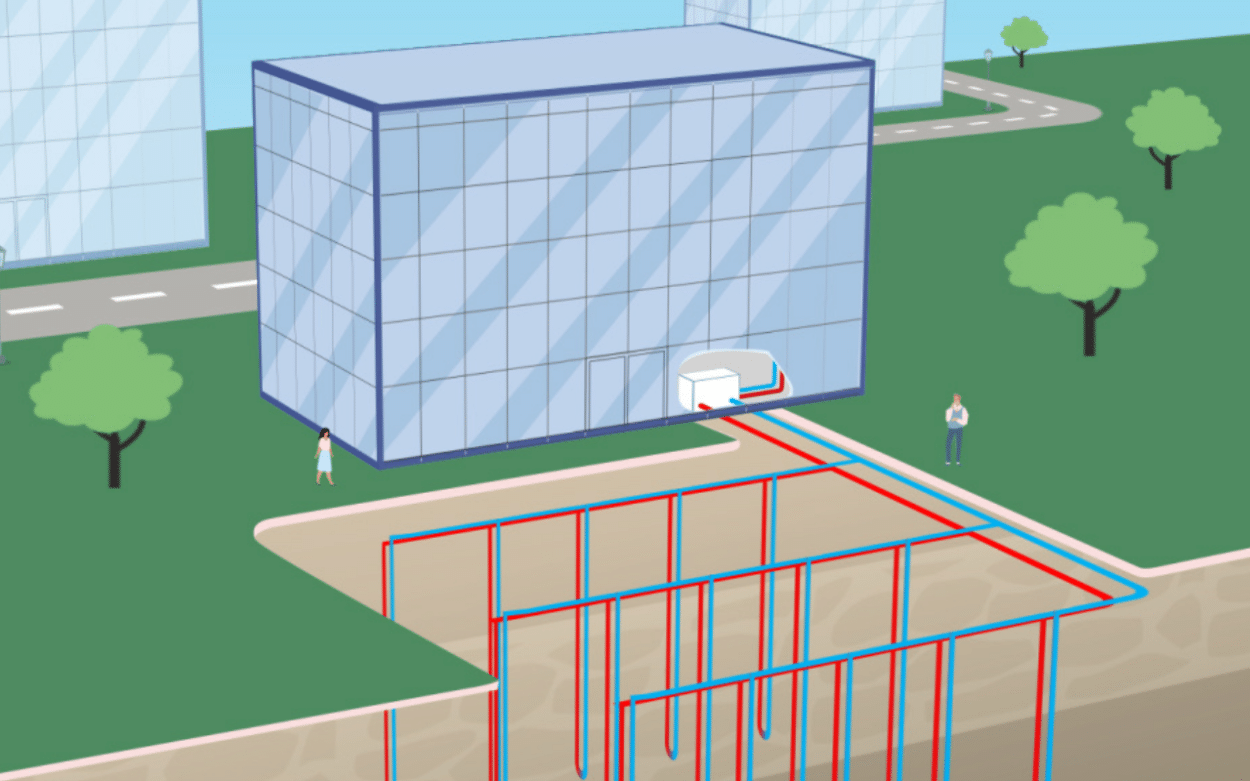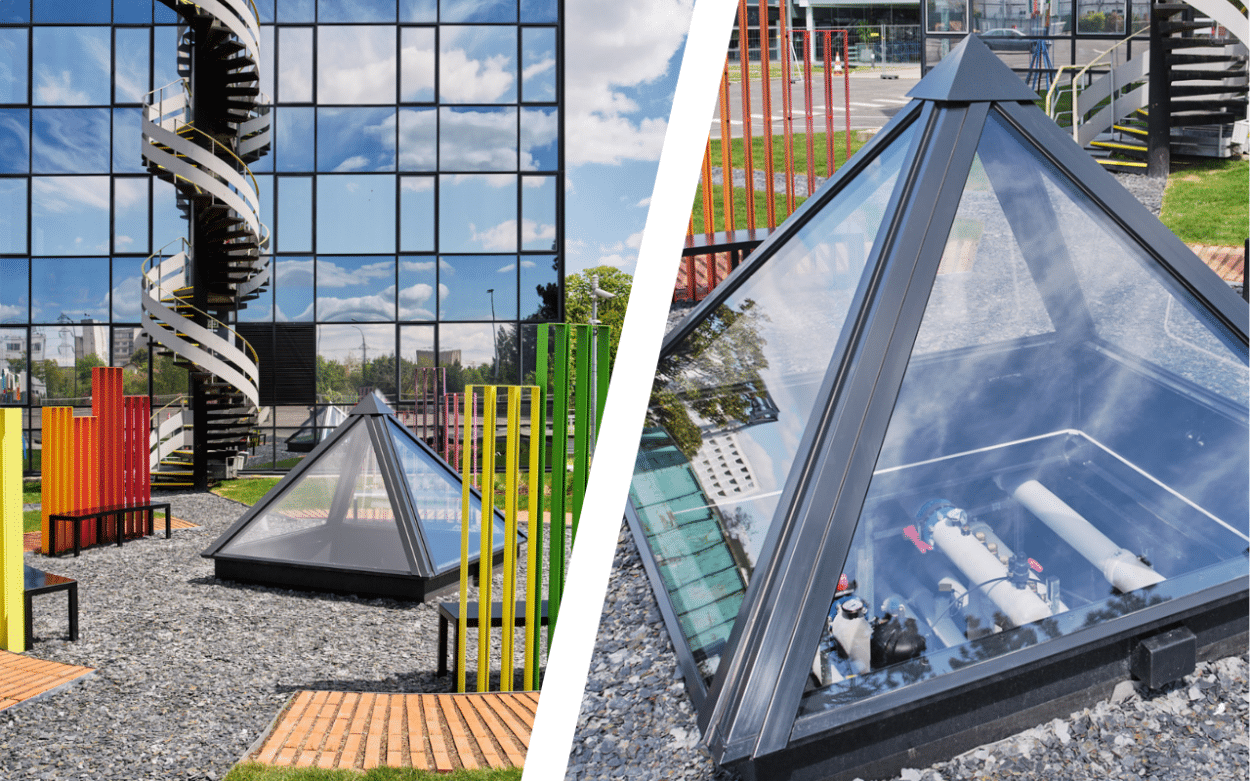Taking advantage of heat trapped underground, without the need to drill deep into the Earth, geothermal exchange (geoexchange) systems offer environmentally friendly heating and cooling for buildings, to reduce their carbon footprint.
Improving the energy efficiency of buildings will be critical to achieving net-zero emissions by 2050. Commercial buildings account for 39% of global greenhouse gas emissions, according to the World Economic Forum. Almost three-quarters of this is due to operational emissions caused by heating, cooling, and lighting.
What is Geothermal Energy?
Tapping into geothermal energy has long offered an environmentally friendly alternative to fossil fuels, but it is often misunderstood. The term “geothermal” is used to refer to two very different ways of taking advantage of heat stored in the ground.
True geothermal energy, sometimes referred to as “direct” or “deep” geothermal, taps into the heat radiating from the center of the Earth. It involves drilling thousands of meters into the ground and is most commonly used in areas where the Earth’s crust is thin, such as Iceland and New Zealand.
This heat from deep within the Earth can be used to create steam and spin turbines to generate clean electricity. The heat can also be used to warm buildings, including district-level solutions that support hundreds of homes and other civic buildings.
What is Geothermal Exchange?
Alternatively, geoexchange – sometimes referred to as “indirect” or “shallow” geothermal – only requires drilling hundreds of meters into the ground. It takes advantage of heat from the Sun which is absorbed by the ground and trapped close to the surface, meaning it can be installed almost anywhere in the world.
While it isn’t as hot as deeper down, the ambient temperature of the ground at these shallow depths is still high enough for geoexchange systems to transfer heat between the surface and the ground. Relying on a ground source heat pump, geoexchange can be used for heating and cooling – using water to extract heat from the ground in winter and then pump heat back into the ground in summer.
Similar systems can also run pipes into the ocean rather than underground, such as the Sydney Opera House’s air-conditioning, which utilizes Sydney Harbour as a heat sink.
Tapping into deep geothermal energy requires vast, expensive engineering projects. Meanwhile, shallow geoexchange systems are much more affordable, as they only delve up to several hundred meters underground.

Celsius Energy
Geoexchange systems can be scaled to meet the HVAC (Heating, Ventilation, and Air Conditioning) needs of a single building, says Sylvain Thierry, COO and co-founder of French geoexchange solutions provider Celsius Energy.
While geoexchange technology is well established, the challenge for building owners has been coordinating all of the different contractors required to install and operate the system. Celsius Energy offers a turnkey solution that can be pre-installed below new buildings or retrofitted to existing buildings.
Rather than drilling very wide vertical boreholes, Celsius Energy drills slanted, star-shaped boreholes which are only the size of several parking spots. This ensures geoexchange systems can be installed even in the middle of a large, densely-packed city like Paris.
Retrofitting geoexchange technology to existing buildings, including district-level solutions, accounts for around 80% of Celsius Energy’s installations, Thierry says.
“Geoexchange is an excellent technology for significantly reducing the carbon footprint of an older building. It is more expensive to install than a traditional HVAC system which relies on fossil fuels, but geoexchange is far less expensive to operate in the long-term. In several installations we delivered for existing buildings in France, replacing an old gas boiler with a Celsius Energy system resulted in a 90% reduction in CO2 emissions and 50% reduction in grid energy costs.”
Meanwhile, today’s new buildings must abide by strict energy efficiency standards, which generally means they must be energy efficient and demonstrate a low carbon footprint. For Thierry,
“Geoexhange systems are still quite a natural fit for these new buildings.”



GeoExchange Australia
While geoexchange systems have been available for decades, interest has grown significantly in the last few years. The push comes from building owners and operators who are looking to reduce their carbon emissions by moving away from traditional gas and electric-powered HVAC systems, says Yale Carden, founder and managing director of GeoExchange Australia.
Apart from reduced energy bills, the savings from geoexchange systems can include avoiding the need for multiple, noisy outdoor air conditioning units, as well as avoiding the need to upgrade a building’s electrical supply to support a traditional power-hungry HVAC system.
“While geoexchange is much cheaper to run over time, the higher upfront installation costs can make it seem less attractive. The economies of scale are bringing that upfront cost down, but it can still be a hurdle. We are working on different financial models which involve reducing that upfront costs and offering more of a service model, which will help make geoexchange an even more attractive option for heating and cooling buildings without taking a heavy toll on the environment.”











